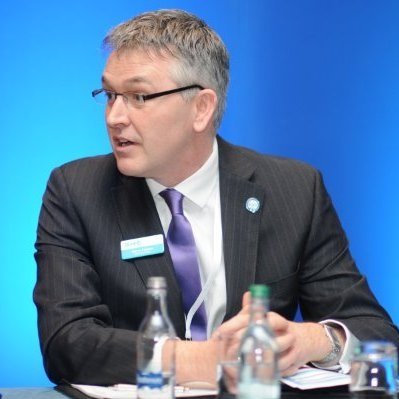5 steps towards a less ‘toxic’ Health & Safety culture
In a deliberately provocative talk at the Safety & Health Expo today Steve Perkins, chief executive of BOHS, questioned whether the term ‘health and safety’ has become dangerous for the profession.

Steve Perkins, chief executive of BOHS
Having focused on safety for so long, and so successfully, health has been left behind. Yet by calling it ‘health and safety’ it’s been easy for businesses to feel that they have been paying attention to both equally.
The numbers don’t bear that out. 100 years ago, 5000 people a year died in workplace accidents. Since then, there has been a constant decrease in annual fatalities; now it’s just 133. “It’s an amazing success story,” Perkins said. “It’s a fantastic achievement, something we should be trumpeting the success of.” And while it should be rightly celebrated, the same cannot be said for health.
HSE estimates that there are over 13,000 deaths a year due to worker ill health. And this is a conservative estimate, backed up by firm data. The true number could be much larger. “The terrible burden of long-latency disease is the elephant in the room of health and safety,” said Perkins.
The annual cost of work-related ill health is £8bn (excluding cancers). 60 per cent of those costs fall on the families of those affected; 20 per cent to the government; and just 10 per cent to the employers. The saying “Those who create the risks pay for it,” does not apply here.
So how did we get here? Perkins said that we have put safety first. This was the right thing to do, given the amount of injuries that were occurring, but we need to stop treating health and safety as if they are the same. Instead we should value health as we do safety.
Perkins laid out five steps towards a more successful health culture within businesses:
- Refocus: Embrace health like safety. Plan for zero harm. Look at how to prevent ill health, instead of being reactive.
- Assessment: It shouldn’t be just toolkits and checklists. There needs to be realistic and robust risk assessments which propose control measures.
- Control: Accept and understand the control measures set out. There need to be different control measures for different situations/exposures, and look at people’s working patterns. PPE should be the last line of defense.
- KPI’s: Monitor reductions in exposure. Analyse those exposures.
- Review: Objectively review assessments and control measures that are put in place. Demonstrate that control measures work, don’t just accept it.
Perkins concluded by saying that, though the health and safety profession may have fooled themselves into believing they can do both successfully, they have yet to live up to the title. The focus needs to be not just sending people home at the end of the working day safe, they also need to be well.
5 steps towards a less ‘toxic’ Health & Safety culture
In a deliberately provocative talk Steve Perkins, chief executive of BOHS, questioned whether the term ‘health and safety’ has become dangerous for the profession.
Safety & Health Practitioner
SHP - Health and Safety News, Legislation, PPE, CPD and Resources Related Topics
Future-proofing safety: Five trends shaping the PPE landscape of tomorrow
Arco backs SHP campaign for PPE inclusivity
Beth Holroyd: ‘PPE that’s not designed with women in mind is a fundamental problem’


If you rearrange the order of the 5 steps, and change ‘Review’ to “Track’ then you get – TRACK:health, or health TRACK:
1. Track (review)
2. Refocus
3. Assessment
4. Control
5. KPIs
The observation that those who create occupational risks don’t pay for it is absolutely ‘spot on’.